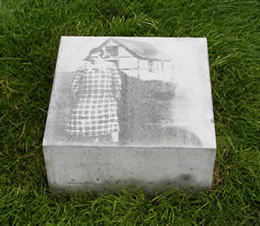
|
| ||||
GRAPHIC CONCRETE |
||||
|
mail[at]samulinaamanka.com |
The patented Graphic Concrete method gives new high-quality solutions and textures for architecture and interior design. It is a surface treatment for concrete, which opens up versatile visual options. Its competitive edge derives from the low production costs of the method, the improved industrial safety and the numerous graphic alternatives offered. It is a unique industrial product that meets the requirements of modern architecture. Graphic Concrete is produced with a special kind of coated film at a prefabrication plant. The film is printed on pre-defined spots with conventional printing technique, using a surface retarder. The designed pattern is created on the surface of the concrete slab as a result of the contrast effect between the fairface and the exposed, fine aggregate surface. The coated films can be used to produce both traditional exposed, aggregate concrete surfaces and surfaces with various patterns on facade and partition wall elements and floor slabs, as well as in landscaping products and works of art. The method provides an effective alternative to the traditional surface retarder treatment applied with a roller or a brush. At the early stages, the technique has been applied mainly in the production of individual works of art and some architectural pilot projects. However, the benefits of the Graphic Concrete technique are splendidly seen on large facades. The method has attracted wide interest among architects. Designers can use the halftone patterns from an existing collection or design their own patterns or even create individual images. The designers can also influence the appearance of the surface by selecting the size, the color and the exposure depth of the cement stone and the aggregate. The special film is 3.1 meters (10.2 feet) wide and available in any length. Both the product and the production method are results of a research and development project launched in 2000 in cooperation with leading concrete factories, paper manufacturers, and printing laboratories. Samuli Naamanka, the inventor of the method, divides his time between many professional activities: graphic concrete, environmental art and furniture design. In the near future, he intends to concentrate on developing a coloring method for concrete. In addition to his training as an interior architect, his work also benefits from his studies in physics, art and graphic design. | |||
|
|
||||